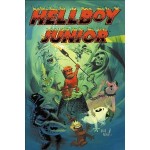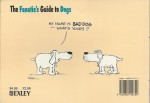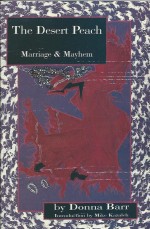

By Murray Ball (Orin Books)
ISSN: 0156-6172
Footrot Flats is one of the funniest comic strips ever created and seems to have been designed as an antidote to idealistic pastoral fantasy and bucolic self-deception. Created in 1975 by cartoonist and comics artist Murray Ball after returning to his New Zealand homeland, the fantastical farm feature ran for a quarter of a century, with the first of a multitude of strip compendia, calendars and special editions released in 1978.
It appeared in newspapers on four continents until 1994 when Ball retired it, citing reasons as varied as the death of his own dog and the state of New Zealand politics.
Thereafter he only periodically released books of all-new material until 2000, with a net yield of 27 collections of the daily strip, 8 volumes of Sunday pages dubbed the “Weekendersâ€, 5 pocket books and ancillary publications such as comedy calendars and “school kits†aimed at younger fans and their harried parents.
There was a stage musical, a theme park and in 1986 a truly superb feature-length animated film. The Dog’s Tail Tale became New Zealand’s top-grossing film (and probably remained so until Peter Jackson started fiddling about with Hobbits) – track it down on video or petition the BBC to show it again – it’s been 15 years, dammit…
The well-travelled and extremely gifted Mr. Ball had originally moved to England in the early 1960s, becoming a cartoonist for Punch (producing Stanley the Palaeolithic Hero and All the King’s Comrades) as well as drawing numerous strips for DC Thompson and Fleetway and concocting a regular political satire strip in Labour Weekly.
After marrying he returned to the Old Country and resettled in 1974 – but not to retire…
Ball was busier than ever once he’d bought a small-holding on the North Island to farm in his “spare timeâ€, which inevitably led to the strip under review.
Taking the adage “write what you know†to startling, heartbreaking and occasionally stomach-turning heights, the peripatetic pencil-pusher built a nine day week to make room for these captivatingly insane episodes concerning the highs and lows – and most definitely “weirds†– of the rural entrepreneur as experienced by the earthily metaphoric Wallace Footrot Cadwallader: a bloke never far removed from mud and frustration…
Wal is a big, bluff farmer. He likes his grub; loves his sport – Rugby, Football (the Anzac sort, not the kiddie version Yanks call Soccer) Cricket and even Golf(ish); each in its proper season and at no other time since he just wants the easiest time a farmer’s life can offer…
Wal owns a small sheep farm (the eponymous Footrot Flats) honestly regarded as “400 acres of swamp between Ureweras and the Seaâ€.
With his chief – and only – hand Cooch Windgrass (a latter-day Francis of Assisi), and an avuncular sheepdog, Wal enjoys being his own boss – as much as the cat, goat, chickens, livestock and his auntie will let him…
Other persons of perennial interest include Wal’s fierce and prickly little niece Janice – known to all as Pongo, the aforementioned Aunt Dolly (AKA the sternly staunch and starched Dolores Monrovia Godwit Footrot), smart-ass local lad Rangi Wiremu Waka Jones, Dolly’s pompous and pampered Corgi Prince Charles and Pew, a sadistic, inventive, obsessed and vengeful magpie who bears an unremitting grudge against Farmer Cadwallader …
When not living in terror of the farm cat, teasing the corpulent Corgi or panic-attacking himself in imagined competition with noble hunting hound Major, Dog narrates and hosts the strip: a cool, imaginative and overly sentimental know-all and blowhard, utterly devoted to his, for want of a better term, Master – unless there’s food about, or Jess (the sheepdog bitch from down the road) is in heat again. However, the biggest and most terrifying scene-stealer is that fulsome feline Horse; a monstrous and invulnerable tomcat who lords it over every living thing in the district …
The comedy is as always, absolutely top-rate and Ball is one of those gifted few who can actually imbue a few lines on paper with the power of Shakespeare’s tragedy and the manic hilarity of manic geniuses like the Marx Brothers or Laurel and Hardy. When combined with his sharp, incisive writing the result is pure irresistible magic.
In the early 1990s Titan Books published British editions of the first three volumes and German, Japanese, Chinese and American translations also exist, as well as the marvellous Australian compendia reviewed here – as ever the internet is your friend…
Once again the funny businesses comes courtesy of the loquacious canine softie, taking time out from eking out his daily crusts (and oysters and biscuits and cake and lamb’s tails and scraps and chips and…) and alternately getting on with or annoying the sheep, cows, bull, goat, hogs, ducks, bugs, cats, horses and geese, as well as sucking up to the resolutely hostile wildlife and the decidedly odd humans his owner knows or is related to.
Dog – his given name is an embarrassing, closely and violently guarded secret – loves Wal but always tries to thwart him if the big bloke is trying to do unnecessarily necessary farm chores such as chopping down trees, burning out patches of scrub, culling livestock, or trying to mate with the pooch’s main rival Darlene “Cheeky†Hobson, hairdresser-in-residence of the nearest town.
This extra-large (262x166mm) landscape monochrome sixth volume again comes from Australian Publisher Orin Books and continues the policy of dividing the strips into approximately seasonal sequences, and after a disturbingly anatomical exploratory self-examination by Mr. Ball, a featuring on ‘This Years Docking…’, Dog’s traditionally extraordinary ‘Introduction’ and selection of cartoon “snapshots†from ace photographer Rangi Jones, ‘Spring’ at last busts out all over…
The busiest season of the farmer’s year – apart from the other three – deals with the over-abundance of every unwelcome weed and bush, the shedding of winter coats, the year’s first crop of Dog’s progeny, dopey calves, horny bulls, horny farmers and hairdressers, piglets, chicks and the general proliferation of life in its myriad forms before the long hot ‘Summer’ settles in, bringing fun with bees, the new enterprise of honey-harvesting, eels and how not to catch them, gently cooling typhoon winds, Christmas (Southern Hemisphere, remember?), reminiscences with aging and unwilling stud ram Cecil and particularly instructive incidents with Horse – such as when the mighty moggy catches the biggest bird he’s ever seen and Wal has to pay for a new hang-glider…
‘Autumn’ brings mushrooms, harvests, haymaking and rugby, plus blackberries, a war with goats, stock sales, inconsolable cows and ewes, golf on horseback (one that whinnies not growls) and how not to worm pets whilst ‘Winter’ again offers floods, lambing season plus, mud, footy, and the canine drama of Dog getting ill.
How do they manage without him? They don’t…
Since these cartoons are culled from 1981-1982 there’s also some few Antipodean observations on the Royal Wedding of the other, two-legged, Prince Charles along with casual – and unnerving – nudity, fun with bullocks and a distressingly obvious love-hate relationship brewing between Rangi and Pongo…
Dry, surreal and wonderfully self-deprecating, Footrot Flats always grafted together sarcasm, satire, slapstick and strikingly apt surrealism in a perfect union of pathos and down to earth (and up to your armpits) humour that was and still is utterly addicting, exciting and just plain wonderful.
If you feel the need to fill your lungs with overly fresh air, your boots with squelchiness and commune with the real countryside why not give the Dog a go?
© 1981-1982 Murray Ball. All Rights Reserved.













